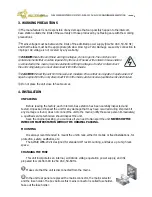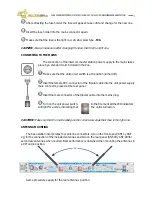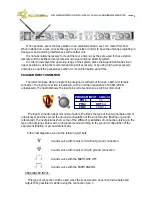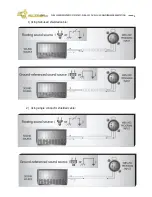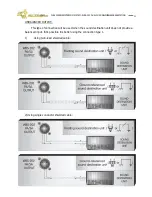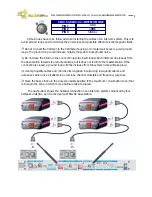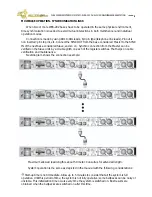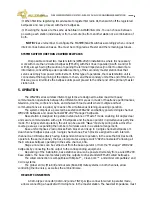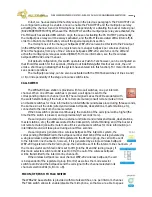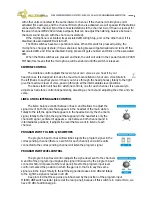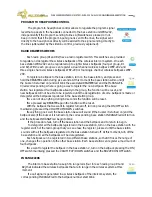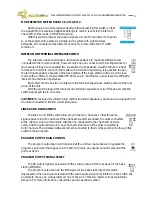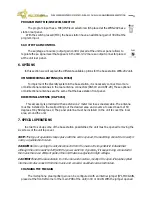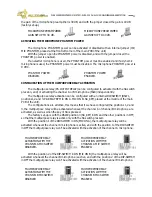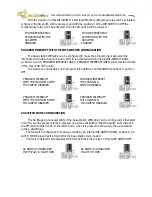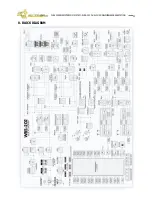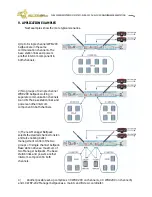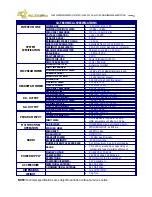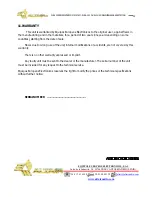
19
with other units connected to the same intercom channel. If the channel A microphone isn’t
activated (for example), and the channel B microphone is activated, we will speak with the stations
connected to the channel B, but the connected stations to the channel A won’t hear us (except for
the dual channel WBP-202 wireless beltpack, that can be adjust the listening balance between
channels A and B, even with the channel unselected).
If the microphone is activated, its associated LED will light up, and on the other hand, if it is
disabled, its associated LED will turn off.
The TALK switches have two operation modes. When this switch is pressed quickly, the
microphone changes its state; if it was enabled, being pressed it gets disabled and turns off the
associated LED, and if it was disabled, being pressed it gets enabled and turns on the associated
LED.
When the TALK switches are pressed and held, the unit will enter in the special function PUSH
TO TALK; this means that the microphone will be enabled until the switch is released.
SIDETONE CONTROL
The sidetone control adjusts the level of your own voice as you hear it in your
headphones. It is designed to make the maximum cancellation of your own voice totally to
the left (that is to say that you won't hear your voice through the headphones), totally to the right
give the maximum level of voice, passing through all the intermediates level positions.
The base station unit has two sidetone controls, one for each channel. It is necessary to
adjust each sidetone control independently, disabling a channel and adjusting the other and vice
versa.
LINE A AND B LISTEN BALANCE CONTROL
The listen balance control between lines A and B allows to adjust the
signal mix of both channels that appears in the headset of the main station.
Totally to the left, the signal that appears in the headset is only the channel A
signal, totally to the right, the signal that appears in the headset is only the
channel B signal, centered it appears a mix between both channels and in
intermediates positions, it adjusts the level that we want to listen of each
channel.
PROGRAM INPUT TO LINES A/B SWITCHES
The program input to lines A/B switches injects the program signal in the
corresponding channel (there is a switch for each channel) and all the units
connected to the corresponding channel will listen the program signal.
PROGRAM INPUT LEVEL CONTROL
The program input level control adjusts the signal level sent to the channels
A and B of the program input signal (the signal introduced by the program input
connector XLR-3-31 placed at the rear panel). Next to the program input level
control is marked the position in which the gain is 0, that is to say the same
signal as in the input. Totally to the left the signal decreases in 10 dB and totally
to the right the signal increases in 20 dB.
Keep in mind that these gains are influenced by the position of the program input
MICRO/LINE switch selector (placed at the rear panel), because if this switch is in mode micro, we
have 30 dB of additional gain.
WB-200 SERIES INTERCOM SYSTEM — WBS-202 DUAL CHANNEL WIRELESS BASE STATION


